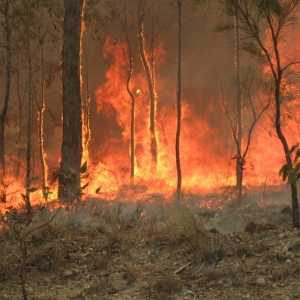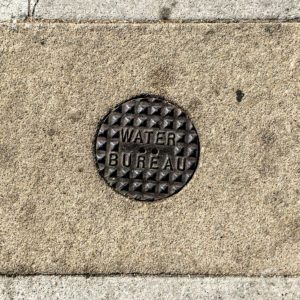Federal Water Tap, November 18: Congress Moves Closer to PFAS Deal
The Rundown
Congressional negotiators appear to agree on some PFAS provisions in a Defense spending bill, but still have work to do on others. The Defense Department, meanwhile, issues its own PFAS standards for screening contaminated sites for cleanup. The GAO reviews irrigation technology, while USDA data shows that U.S. irrigation is becoming more efficient. An inspector general’s report finds that the Bureau of Reclamation mismanaged a farm drainage treatment plant in California’s Central Valley. The EPA publishes draft revisions of regulations for lead in drinking water, which the agency’s expert advisory panel will consider next month. And lastly, the National Academies begins reviewing a draft federal report about the toxicity of fluoride.
By the Numbers
$67.8 million: Cost of a treatment plant in California’s Central Valley that was supposed to remove salt from farm drainage water in order to meet water quality goals. The project, which was overseen by the Bureau of Reclamation, was, in fact, not designed to remove salts, and therefore it did not meet its performance goals, according to an audit. The audit concluded that Reclamation mismanaged the project. (Office of the Inspector General)
News Briefs
Congress Closer to PFAS Deal in Defense Bill
The chair of the House Armed Services Committee said that congressional negotiators have reached agreement on several PFAS-related provisions that have held up passage of a Defense spending authorization bill, Bloomberg Environment reports.
Rep. Adam Smith (D-WA) said that there is agreement on requiring the EPA to regulate certain PFAS chemicals in drinking water and on a timeline for adopting PFAS-free firefighting foams.
But Smith noted that there is still an impasse over whether to designate the chemicals as hazardous substances under the federal Superfund law.
Defense Department Issues Its Own PFAS Screening Levels
In a memo from October, the Defense Department appears to set its own standards for three PFAS chemicals to be used for initiating contaminated site cleanup investigations. The standards are, in one case, 10 times higher than a draft EPA proposal.
The memo was obtained by the Bucks County Courier Times newspaper, which covers the region north of Philadelphia.
The memo, signed by Robert McMahon, assistant secretary of Defense for sustainment, addresses PFOA, PFOS, and PFBS, but without complete clarity. According to the Courier Times:
The memo states it provides “clarifying technical guidance” for the investigation of PFAS, and puts forth a 400-ppt groundwater screening level for PFOS or PFOA when they are found individually. That level is 10 times higher than what the EPA draft document recommends in those situations.
However, the DOD memo does advise that when “multiple PFAS” are found, the screening level drops to 40 ppt.
It is unclear what the term “multiple PFAS” means. The memo also references a third chemical, PFBS, and establishes screening levels of 40,000,000 ppt, or 40,000 ppt where multiple PFAS are found. But there are thousands of additional chemicals in the PFAS family beyond the three referenced in the memo.
An EPA spokesperson would not comment on the standards in the memo because the EPA’s own proposal is still in draft form.
Fluoride Review
A National Academies panel began its review of a federal agency’s draft assessment of the toxicity of fluoride, Bloomberg Environment reports.
The National Toxicology Program published a draft report examining the effects of fluoride on brain development in children. The draft concluded that, at high levels, fluoride impairs brain development. When looking at fluoride levels that are commonly found in drinking water, cognitive effects were “inconsistent, and therefore unclear,” according to the report.
The National Academies’ review is expect to take 12 months.
Studies and Reports
Irrigation and Water Scarcity
The Government Accountability Office, at the request of four congressional Democrats, reviewed farm irrigation technology and the implications for U.S. water scarcity.
Irrigated agriculture and water scarcity often go hand-in-hand. That’s because irrigation is the largest consumer of water in the country.
The GAO offered two policy options that Congress could pursue to reduce irrigation water demand. One is irrigation scheduling, which takes weather and crop needs into account when determining when to irrigate and how much water to apply.
The second is the use of technologies, like soil moisture probes, that detect how much water a crop needs. Both options have hurdles: funding, for instance, or internet connectivity.
In its research, the GAO stumbled onto a conundrum that is familiar to those in the American West. Increasing irrigation efficiency can increase overall water use, for two reasons. One, because of increased yields and two, farmers might use the conserved water to expand production. More efficiency might also decrease downstream flows because of less upstream “waste.”
The GAO recommends, if water saving is the goal, that irrigation efficiency technologies be coupled with policy changes.
“Many sources — including western state policymakers, agricultural economists, and federal government officials — have said that for irrigation technology and practices to be used to conserve water, it should be accompanied with an agreement that incentivizes conserving water,” the report concludes.
The report was requested by Reps. Peter DeFazio (D-OR), Raul Grijalva (D-AZ) and Alan Lowenthal (D-CA) and Sen. Ed Markey (D-MA).
In context: Spending to Conserve Water on California Farms Will Not Increase Supply
USDA Releases New Irrigation Data
Irrigation in the United States continues to become more efficient, according to U.S. Department of Agriculture data.
The average amount of irrigation water applied to a field was 1.5 acre-feet per acre in 2018. That number comes from the Irrigation and Water Management Survey, which is conducted every five years.
In 2013, the average was 1.6 acre-feet per acre, and in 2008, it was 1.7 acre-feet per acre.
In context: U.S. Irrigation Continues Steady Eastward Expansion
North Dakota Water Supply Project
The Bureau of Reclamation will prepare an environmental impact statement for a water supply project in eastern North Dakota. The project, which includes a 165-mile pipeline, is designed to ensure water availability for half the state in times of severe drought.
Reclamation considers two issues will be paramount in its review. One is the effect on water volumes in the Missouri River, the project’s water source. Water would be diverted from Garrison Dam.
The other is the potential to convey invasive species across watersheds. The project will transfer water to a region that drains into Hudson Bay, in Canada.
Comments on the scope of the review are being accepted through December 15. Send them to ENDAWS.EIS@usbr.gov.
On the Radar
Lead and Copper Rule Proposal Published
The EPA published in the Federal Register its draft proposal for updating federal regulations for lead in drinking water.
Publication initiates a public comment period that ends on January 13, 2020. Submit comments via www.regulations.gov using docket number EPA-HQ-OW-2017-0300.
Managing Large River Basins
On November 20, federal scientists and officials will take part in a meeting on the difficult of managing large river basins, focusing on the upper Mississippi River and Rio Grande. The all-day meeting, to be held in Washington, D.C. is free and open to the public.
The meeting is being convened by the National Academies of Sciences, Engineering, and Medicine.
National Drinking Water Advisory Council Fall Meeting
The group of experts that advises the EPA on drinking water policy will meet on December 4 and 5 in Washington, D.C.
The agenda focuses on regulations for perchlorate and lead, both of which are under development.
The meeting is open to the public, but registration is required. To RSVP, send an email to Elizabeth Corr (corr.elizabeth@epa.gov) with the subject line NDWAC 2019 Attendee. Include your name, address, and phone number. If you want to make a five-minute oral statement, indicate your wishes in the email.
Federal Water Tap is a weekly digest spotting trends in U.S. government water policy. To get more water news, follow Circle of Blue on Twitter and sign up for our newsletter.
Brett writes about agriculture, energy, infrastructure, and the politics and economics of water in the United States. He also writes the Federal Water Tap, Circle of Blue’s weekly digest of U.S. government water news. He is the winner of two Society of Environmental Journalists reporting awards, one of the top honors in American environmental journalism: first place for explanatory reporting for a series on septic system pollution in the United States(2016) and third place for beat reporting in a small market (2014). He received the Sierra Club’s Distinguished Service Award in 2018. Brett lives in Seattle, where he hikes the mountains and bakes pies. Contact Brett Walton





Leave a Reply
Want to join the discussion?Feel free to contribute!